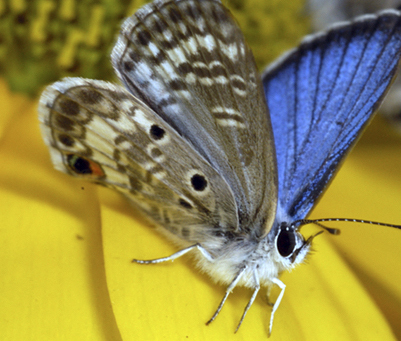KEY LARGO, Fla. — For the first time in almost a decade, a rare and endangered butterfly is flying in the main stretch of the Florida Keys, once again defying the hurricanes and habitat loss that had brought it to the brink of extinction.
Researchers hope the Miami blue butterfly – a delicate creature with a wingspan about as wide as an adult’s thumb – can find a way to thrive in a fragile environment that needed extensive restoration after Hurricane Irma’s landfall with 130-mph winds last September. “It is very tenuous, and all you can do is keep plugging away,” said Jaret Daniels, director of the McGuire Center for Lepidoptera and Biodiversity at the Florida Museum of Natural History at the University of Florida.
The Miami blue is one of two federally protected butterflies released in the island chain this week as part of a project aimed at increasing their numbers in the wild and expanding their ranges. The releases were delayed almost a year because of damage left behind by Irma.
Daniels led a team of researchers placing about 150 dark blue, bean-sized chrysalises, protected from predators by plastic tubes, near grey nickerbean and blackbead plants in Long Key State Park on Tuesday. The first butterflies emerged from their protective tubes Wednesday.
The Miami blue was once common in coastal areas from the Keys north to Cape Canaveral, until development eliminated its habitat. It was feared extinct until two isolated populations were rediscovered in the Keys.
Unfortunately, one of those populations was in a state park that around 2009 became infested with invasive iguanas that ate the plants where the butterfly laid its eggs. Before Tuesday, the only wild population survived on a remote island off Key West.
Copy the Story LinkSend questions/comments to the editors.



Success. Please wait for the page to reload. If the page does not reload within 5 seconds, please refresh the page.
Enter your email and password to access comments.
Hi, to comment on stories you must . This profile is in addition to your subscription and website login.
Already have a commenting profile? .
Invalid username/password.
Please check your email to confirm and complete your registration.
Only subscribers are eligible to post comments. Please subscribe or login first for digital access. Here’s why.
Use the form below to reset your password. When you've submitted your account email, we will send an email with a reset code.